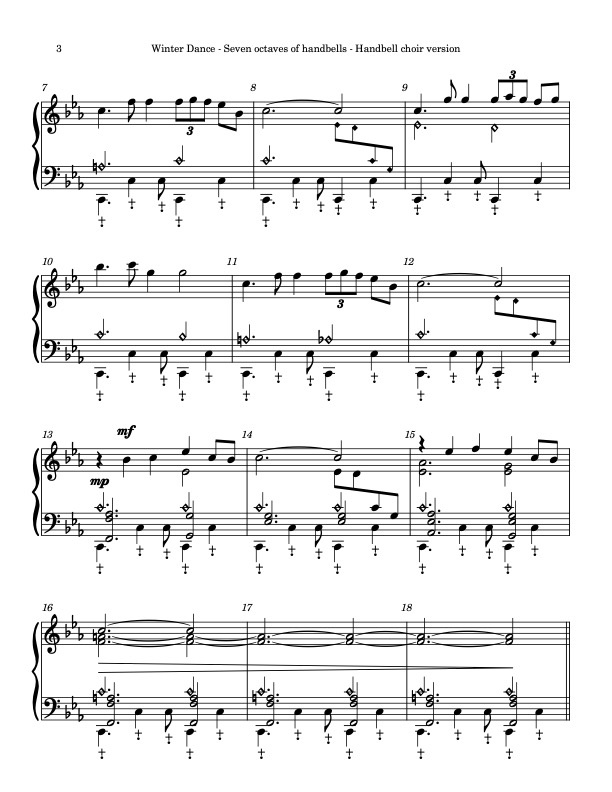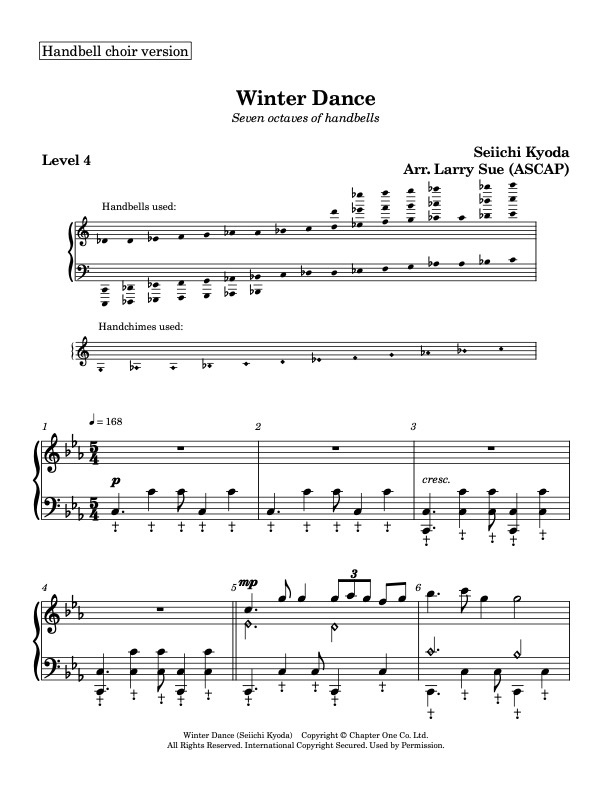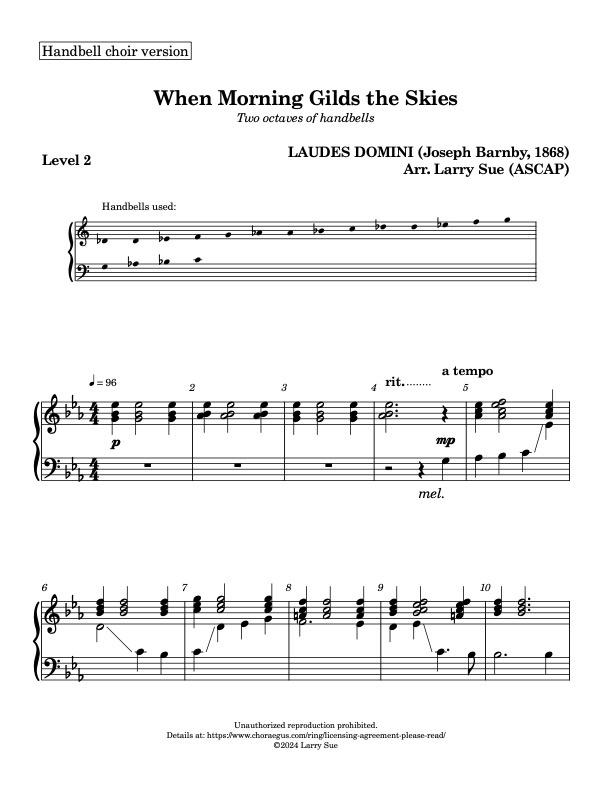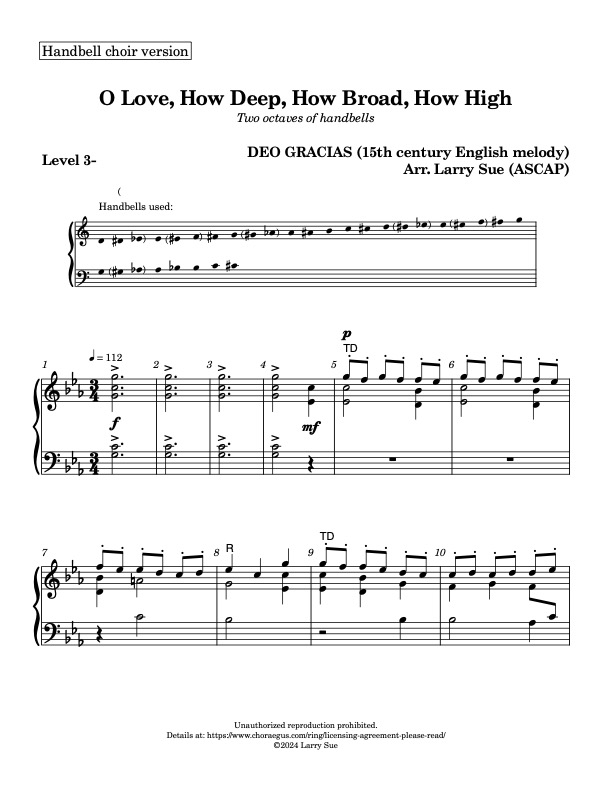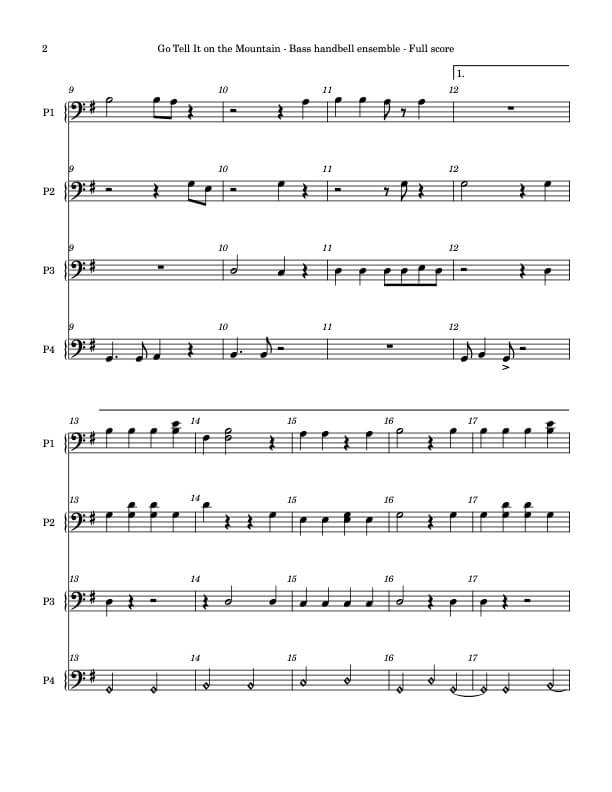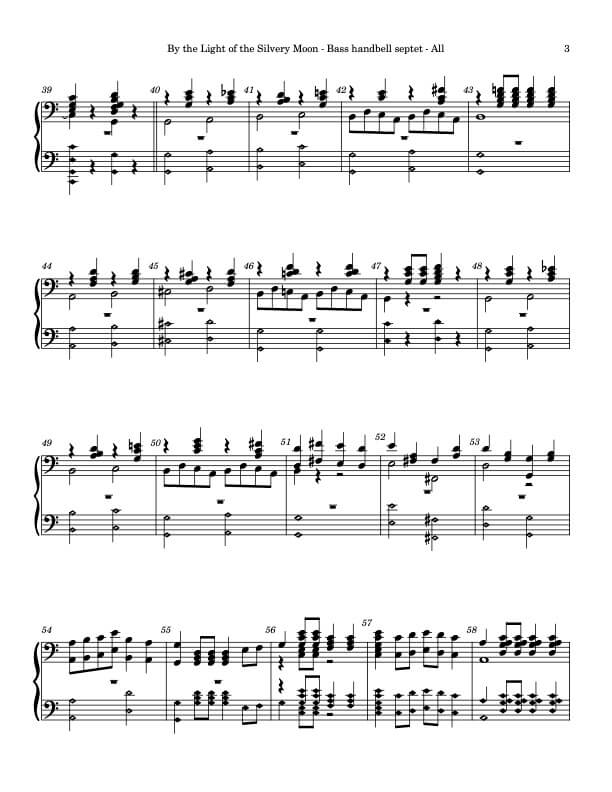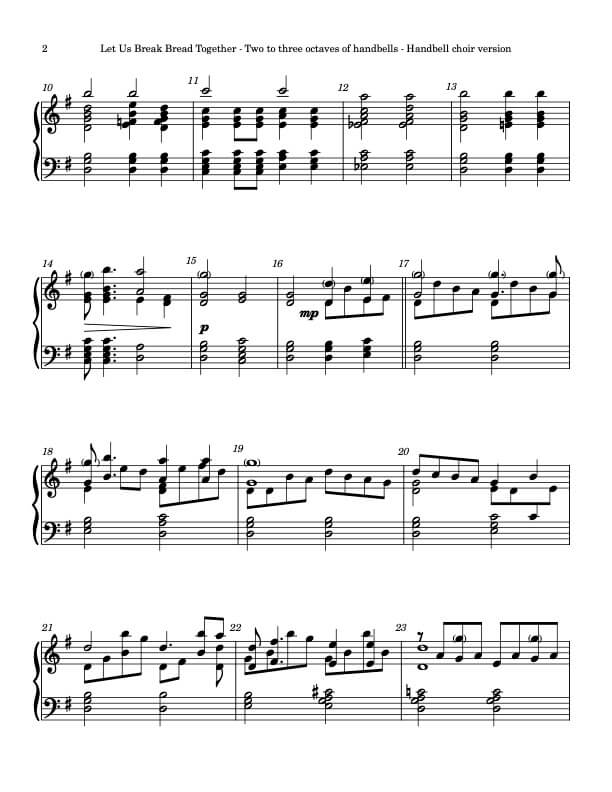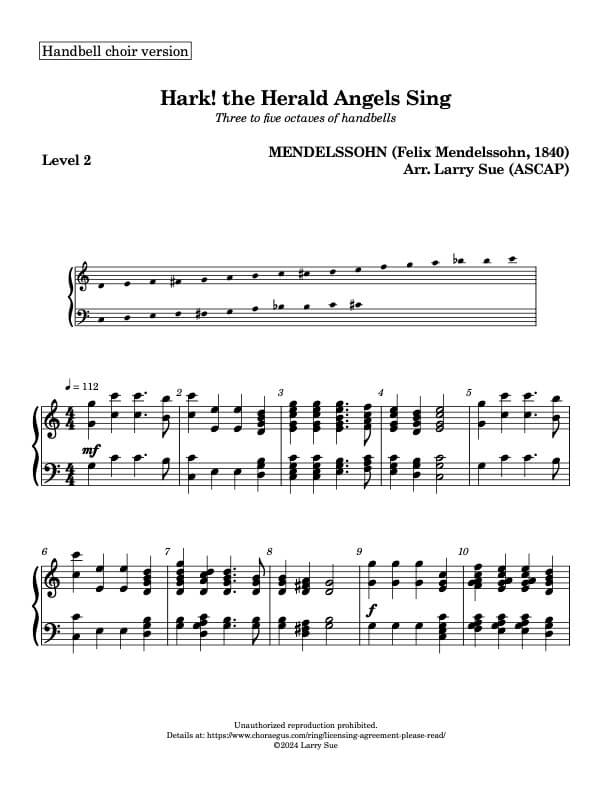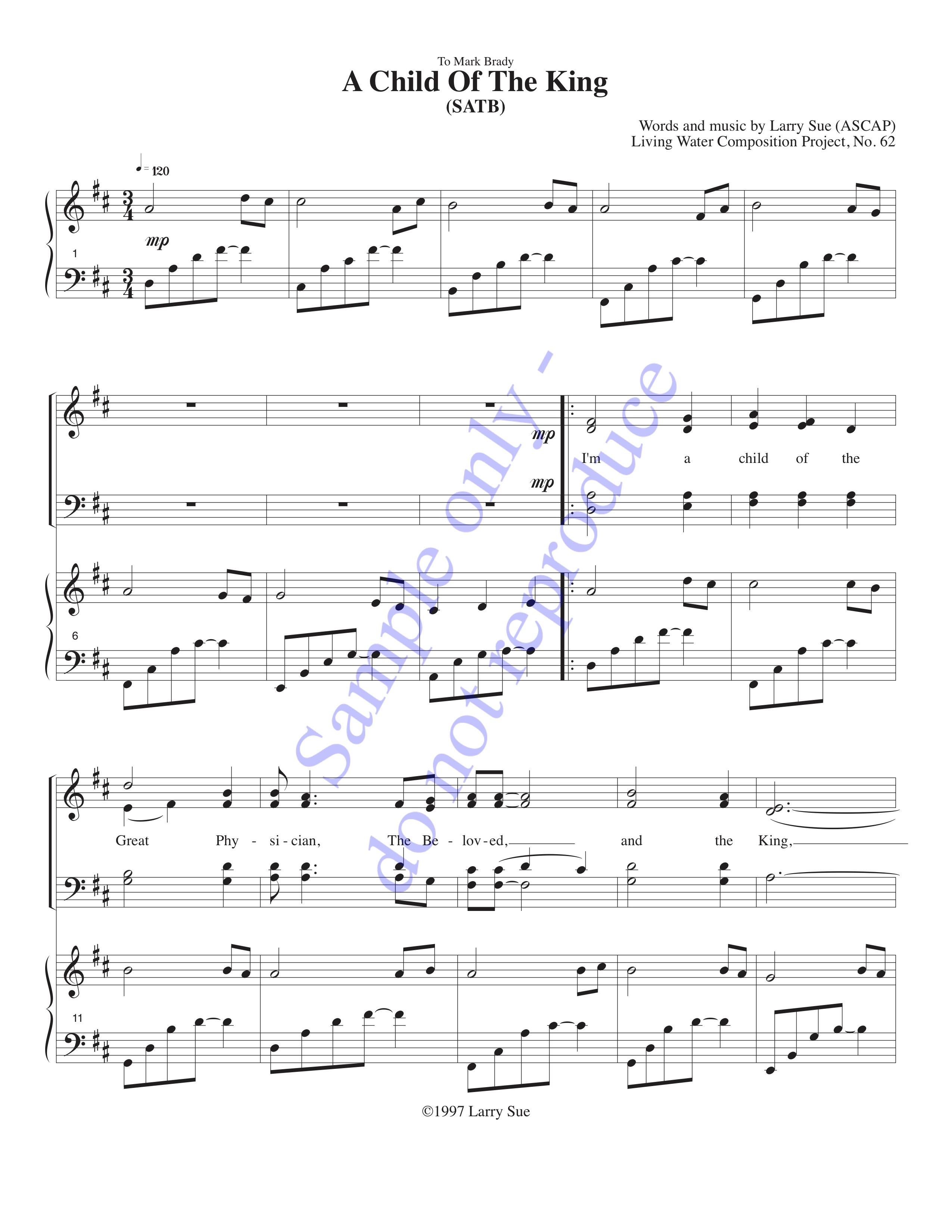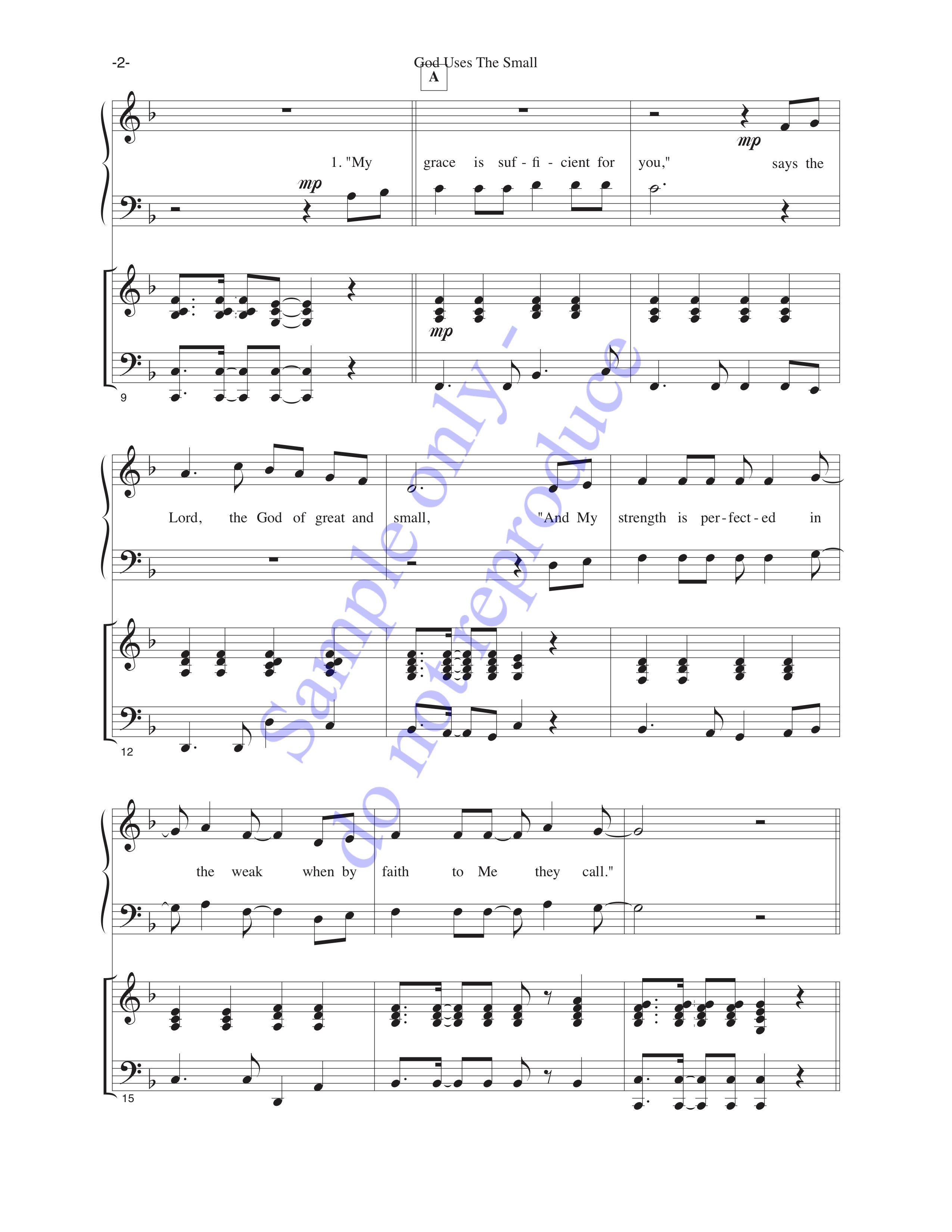Walking Home, an original work for three to five octaves of handbells, brings to mind that feeling you have when the time to leave work or school has arrived. The special feeling of knowing that you’re headed back to your safest place goes with you and inspires your walk – and the melody in your head as you look forward to getting there.
The first and last sections are straightforward; there’s a little bit of very manageable syncopation. The middle section sounds complex, but if you inspect the score, you’ll find that each of the four voices is playing a part that’s about Level 2+; it’s putting them together that makes the passage sound more intricate. A quick note: Your position 8 (CD6) ringer should have at least a basic understanding of four-in-hand, because that middle section works quite nicely if your P8 takes <C6>, <D6>, <E6>, and <F6>.
Purchasing the handbell choir version of this arrangement grants permission to print and maintain up to fifteen copies for your handbell ensemble; purchasing the single copy version grants permission to print and maintain one copy. Purchase also gives permission for performance, broadcasting, live-streaming and video-sharing online. See our licensing agreement for full details, and please remember to mention the title and arranger of the piece on video-sharing sites, social media and any printed materials such as concert programs.
Find Larry and Carla on Facebook!

